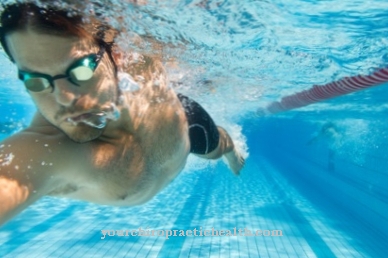condition is not the same as endurance, it is part of the condition. Condition means the physical condition of a person, i.e. the ability to perform well over the longest possible period. Fitness training can increase performance.
What is the condition?

Condition means Efficiency in the areas of strength, endurance, speed, coordination and flexibility. All areas overlap and can be improved with practice. Individual conditional characteristics can be increased through discipline and consistency. Everyday life, especially the practice of sport, places different physical demands on us.
Through the interaction of the nervous system and muscles, strength causes us to overcome resistance. Muscle building training is only one form of strength training and serves to increase strength endurance and strength speed. Those who have endurance can withstand a load longer or delay the decline in performance. Endurance is inextricably linked with the ability to regenerate.
Speed enables us to react as quickly as possible to environmental stimuli and to set ourselves in motion immediately. Doctors differentiate between elementary and complex responsiveness. Mobility is a basic requirement for good physical condition. The elasticity of muscles and tendons is necessary for many movement sequences and prevents injuries.
Function & task
We mostly know physical condition in connection with sport, but everyone has a general condition. It is synonymous with physical performance and a measure of vitality and health.
Condition decreases with age, but can be increased through training. Through consistent exercises we can increase our muscle strength and the performance of our organs, endurance, speed, flexibility and strength.
The basic motor skills are distributed differently in each person, so that individual sports talents can crystallize. The force includes the maximum force, i.e. the greatest possible force that is used to overcome a resistance. The speed of force, on the other hand, is the ability to use force quickly and optimally. Strength endurance in turn describes the resistance to fatigue, both during dynamic and static use of force. The reactive force describes the eccentric-concentric rapid force with the shortest coupling, both when stretching and shortening the muscle. If a person develops a high level of exertion at the beginning of a load, the term explosive force is ultimately used.
Several manifestations are also distinguished in terms of endurance. Sports medicine makes a distinction between local and general endurance. If no more than 14% of the skeletal muscles are active, it is local endurance. The cardiovascular system is moderately stressed. Anything beyond that falls into the general endurance category.
When it comes to speed, a distinction is made between the speed of reaction, the speed of movement and the ability to accelerate. Mobility describes the property of muscles and joints to be able to carry out movements with a large extent (amplitude). A good example of this is stretching exercises.
Flexibility depends on the structure of the skeleton and the associated supporting apparatus. The ability to stretch depends on the elasticity of the muscles and tendons. Active mobility describes the range of motion when the muscles are contracted, passive mobility describes the greatest possible range of motion that can be achieved through external forces. The brain, central nervous system and skeleton work together in a targeted sequence of movements for coordination.
You can find your medication here
➔ Medicines against concentration disordersIllnesses & ailments
A person's physical and psychological properties and characteristics are both inherited and influenced by the environment. Physical performance and stamina can be increased through exercises, but an important characteristic of the personality must first be present: will or motivation. Only with sufficient motivation will the energy be provided that is required to carry out a strenuous activity.
During training, the stimulus produces a more or less effective adaptation of the organism. This in turn determines the structure, scope and intensity of training units. Condition training can be designed according to the intensity, extent, duration and density of the workload.
In order to be able to perform in sports, mental prerequisites are also necessary. The athlete needs motivation, cognitive, volitive and social skills. Those who have volitive abilities can perform under stress and with external resistance.
Diseases such as multiple sclerosis (MS), but also lifestyle, can have a negative impact on fitness. It has long been known that alcohol and nicotine reduce athletic endurance and performance.
The reduction in condition through alcohol is considerable. The regeneration phases after an intoxication also last considerably longer than for a person who has not drunk anything. Smoking inevitably affects the performance of the body, as tobacco smoke causes poor blood flow to the lungs and bronchi. Since less oxygen reaches the lungs, the organs are poorly supplied with nutrients.
Those who are quickly exhausted, i.e. have little strength and stamina, also lose quality of life. People with stamina deficits find it harder to get through everyday work or daily work at home and often have little strength for leisure activities.
But even people with MS can improve their situation through training. Of course, the fitness level of a competitive athlete is not the goal, but the patient regains quality of life by improving endurance. Those who feel fitter are more mobile again and do more.
Even after a long acute illness, endurance training can make a difference again. The exercise intervals must be adapted to the physical conditions. The training strengthens the circulation, stabilizes the immune system and blood pressure.



.jpg)




















.jpg)



